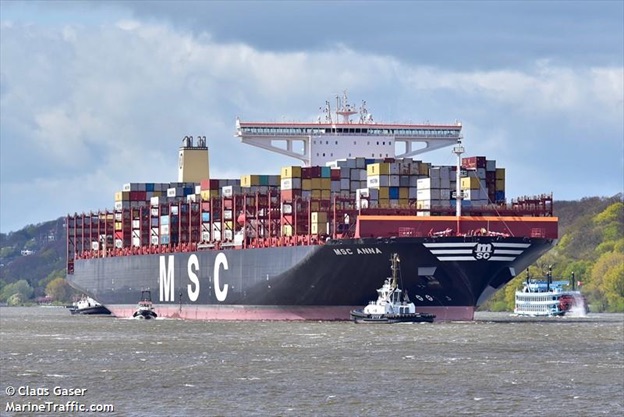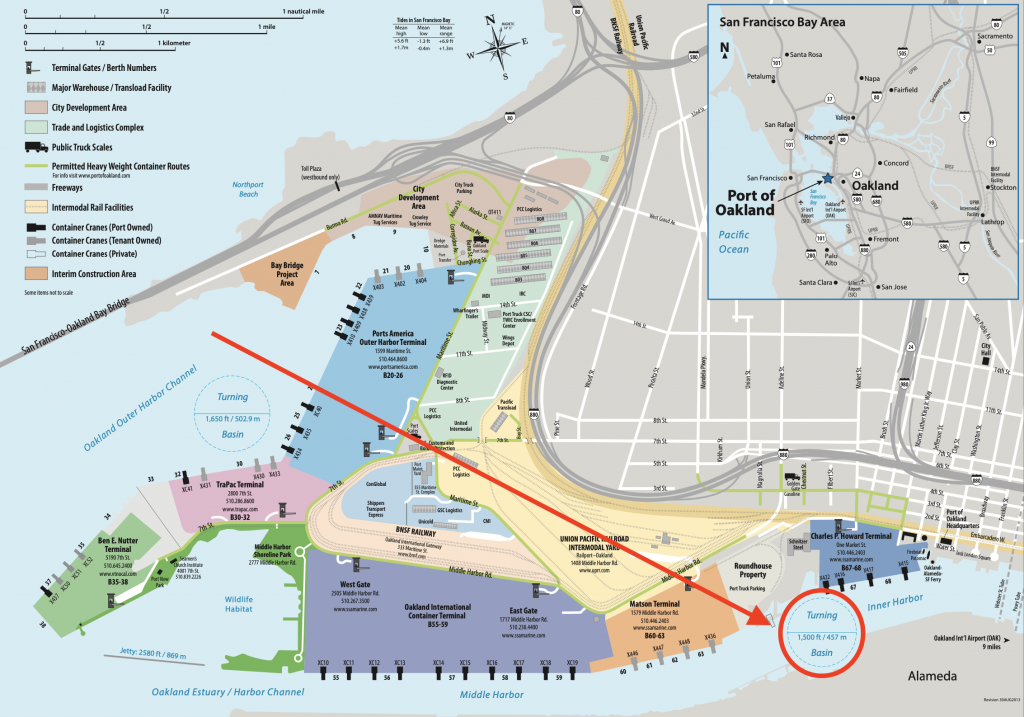On April 16th, the Port of Oakland hosted Mediterranean Shipping Company’s MSC Anna, a 19,200 20-foot container ship, which is one of the largest container ships ever to dock at a North American port, according to Michael Zampa, the Port’s communication director.
Zampa told AJOT that the mega container ship “stopped at the Port of Long Beach to pick up empty containers before sailing to Oakland where it will unload import containers, pick up export containers and return to Shanghai.”
“We’ve spent years, and millions of dollars keeping ahead of the pace of trade and the size of ships,” Port of Oakland Executive Director Danny Wan said in a statement.
The MSC Anna’s 19,200 20-foot cargo container capacity, makes it one of the largest vessels ever to visit a North American port, Zampa said.
Captain Joseph Long, president of the San Francisco Bar Pilots told AJOT that piloting of the 19,200 TEU Anna demonstrated that the Port of Oakland could handle the largest mega container ships.

He wondered whether economic disruptions related to the Covid-19 virus would create consolidation amongst ocean carriers resulting in more 19,000 TEU ships arriving in the San Francisco Bay utilizing greater economies of scale than smaller vessels.
Long said, “The challenges piloting the MSC Anna to the Port of Oakland required working on the simulator at California Maritime Academy to understand the challenges of maneuvering such a large ship into San Francisco Bay.”
He noted that in 2016, San Francisco Bar Pilots brought in the CMA-CGM Benjamin Franklin, which is a smaller vessel. The Anna is 1312 feet Length Over All (LOA) and the Franklin’s LOA is 1309. The bigger differences are that the Anna displaces 15,000 tons more than the Anna and has a beam of 192 feet as opposed to the Franklin, which has a beam of 177 feet:
“So, the challenges for the Anna are greater than they were for the Franklin because we have to bring the vessel into the Oakland Estuary, which is narrow and poses its own challenges.
We need two pilots to bring in this size of vessel. The primary pilot oversees the operation of the vessel, the second pilot brings specialized gear including very precise GPS technology, so that the second pilot can feed precise information to the primary pilot.

Transiting the Oakland Estuary requires that the vessel comes in on the port side to berth at OICT (Oakland International Container Terminal). Then when the vessel departs, we back it out and then has to be turned around, but this maneuver can only be done in slack tide. There are three to four tides per day and so the vessel departure is restricted to those tidal conditions.”
In 2019, the general manager of OICT told AJOT that the Port of Oakland must quickly embark on an expansion of the Turning Basin located in the Oakland Estuary or face the loss of next generation container ship business.
Jim Rice, general manager Stevedoring Service of America (SSA) Terminals International said it became clear when CMA-CGM’s 18,000 TEU (twenty-foot unit) container ship, Benjamin Franklin, docked at OICT three years ago that maneuvering the ship through the Turning Basin “was not going to work on a regular basis because the Basin was too narrow.”
As a result, Rice said, the process for widening the basin needed to begin: “The bottom line is that we cannot service the next generation of 18,000 TEU ships at the Port of Oakland without an expansion of the Turning Basin.”

